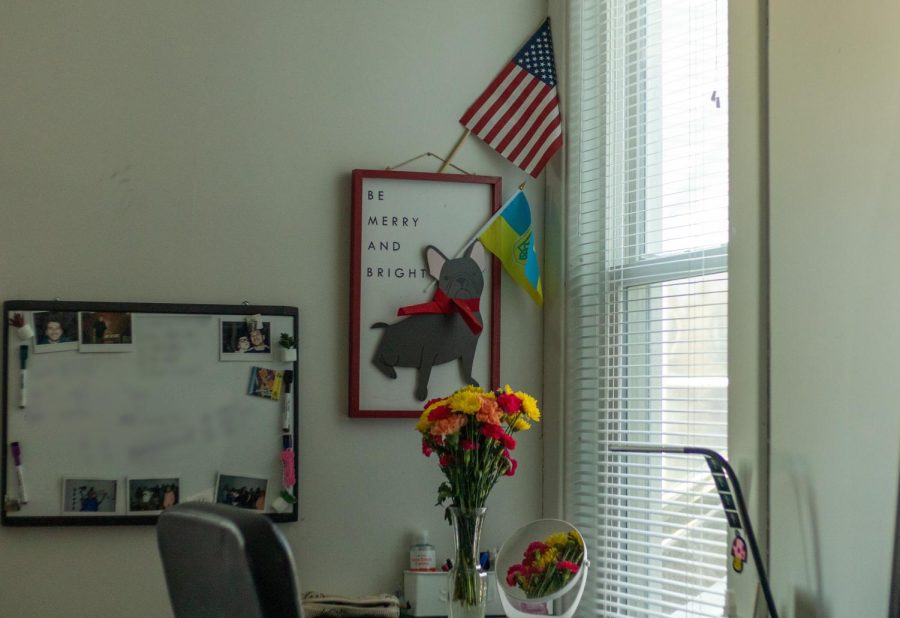NAIROBI, Kenya (AP) âÄî For the first three months of 2009, Somalia’s notorious pirates faded from the headlines as a massive international naval force moved in, and many observers thought the pirates were running scared. Not so fast: the pirates have hijacked at least five vessels since Saturday. Using a new strategy, they are operating further away from warships patrolling the Gulf of Aden. And they no longer have to contend with the choppy waters that always plague the seas off Somalia in the early part of the year. That has allowed the sea bandits to come back in force âÄî seizing five vessels over a 72-hour period. “The weather has improved west of Seychelles and they’ve realized they have much more freedom of action down to the south because the coalition are not there in great numbers,” said Graeme Gibbon Brooks, managing director of the British company Dryad Maritime Intelligence Service Ltd. “We’re going to end up probably playing a cat-and-mouse game in the next six months.” The lull in successful major attacks was partly because the pirates found it harder to strike inside the Gulf of Aden, where warships from the United States, China, France, India and elsewhere have concentrated their efforts to protect one of the world’s most important shipping routes. Now, analysts say, the pirates have moved many of their operations further south, targeting ships as they come out of the Mozambique Channel. “It’s exactly the same tactics as before, it’s just a different area … Perhaps they’re trying to get the navies to spread their assets more widely,” said a Nairobi-based diplomat, noting that better weather was also encouraging attacks. He spoke on condition of anonymity because he was not authorized to speak to the media. The pirates received tens of millions of dollars in ransom payments with high-profile seizures last year that included a Saudi oil tanker and a Ukrainian ship loaded with tanks, both of which were later released. But while the gunmen seized nearly 38 percent of the vessels they targeted in 2008, their success rate in the first two month of 2009 plummeted to about 13 percent. The five attacks since Saturday show a new strategy âÄî they are moving further out to sea and down the Somali coast. One reason is that surveillance in the Gulf of Aden is higher, with unmanned drones, helicopters and aircraft flown from shore. The helicopters have frequently intervened in attacks, firing at gunmen or even picking up crew members who jumped overboard. But one analyst at a private security firm says the international patrols are poorly coordinated. He pointed to a recent case where one of the security company’s guards escorting a vessel did not see a warship for over 100 miles and then came across three at once. At other times, warships were in Djibouti harbor instead of out patrolling, said the analyst, who spoke on condition of anonymity because he did not want to publicly criticize naval forces. Cmdr. Jane Campbell of the Bahrain-based U.S. 5th Fleet, which monitors piracy in the Gulf of Aden, said “international navies alone will never be the complete solution to piracy.” “Even with the increasing number of international navies operating in the area, it’s a vast region âÄî you’re talking about an area that’s well over a million square miles … The closest naval vessel could be days away,” she said. Still, the international patrols have been a strong deterrent, said Cmdr. Gerry Northwood, the head of operations for the European Union’s anti-piracy task force. “The number of ships hijacked at the moment is .001 percent of the total number of ships going through,” he told the BBC. “Now clearly if you go through that corridor … there is a risk that you might come under attack. But the measures we’ve put in place and the protective measures that we’ve encouraged the merchant shipping to adopt have definitely had a significant effect.” The pirates are trained fighters who frequently dress in military fatigues and use speedboats equipped with satellite phones and GPS equipment. They are typically armed with automatic weapons, anti-tank rocket launchers and various types of grenades. Far out to sea, their speedboats operate from larger mother ships. Most hijackings end with million-dollar payouts. Piracy is considered the biggest moneymaker in Somalia, a country that has had no stable government for decades. Roger Middleton, a piracy expert at the London-based think-tank Chatham House, said pirates raked in up to $80 million in ransoms last year. The U.S. Navy and other nations have international authority to battle pirates in the open seas and come to the aid of vessels under attack. But they have been stymied over how to respond to ships under pirate control, fearing an all-out assault could endanger crew members held hostage. On Tuesday, French authorities were monitoring a French tourist boat seized by pirates off the coast of Somalia after the passengers and crew were repeatedly warned to avoid the area. Five French tourists were on the boat, the Tanit, when it was seized Saturday, Foreign Ministry spokesman Eric Chevallier said. The non-governmental group Ecoterra International, which monitors seajackings, said on its Web site that the Tanit was seized by about 14 pirates some 340 nautical miles from Bandar-Beyla on Somalia’s eastern coast. Besides the French yacht, a German ship was also seized Saturday. A Yemeni tug was taken Sunday, followed by the hijackings of a British ship and a Taiwanese vessel Monday. A total of 14 vessels and about 200 crew members are currently under the control of pirates, according to the International Maritime Bureau.
Somali pirates back in action, seize 5 ships
Using a new strategy, they are operating further away from warships patrolling the Gulf of Aden. And they no longer have to contend with the choppy waters that always plague the seas off Somalia in the early part of the year.
Published April 7, 2009
0
More to Discover







